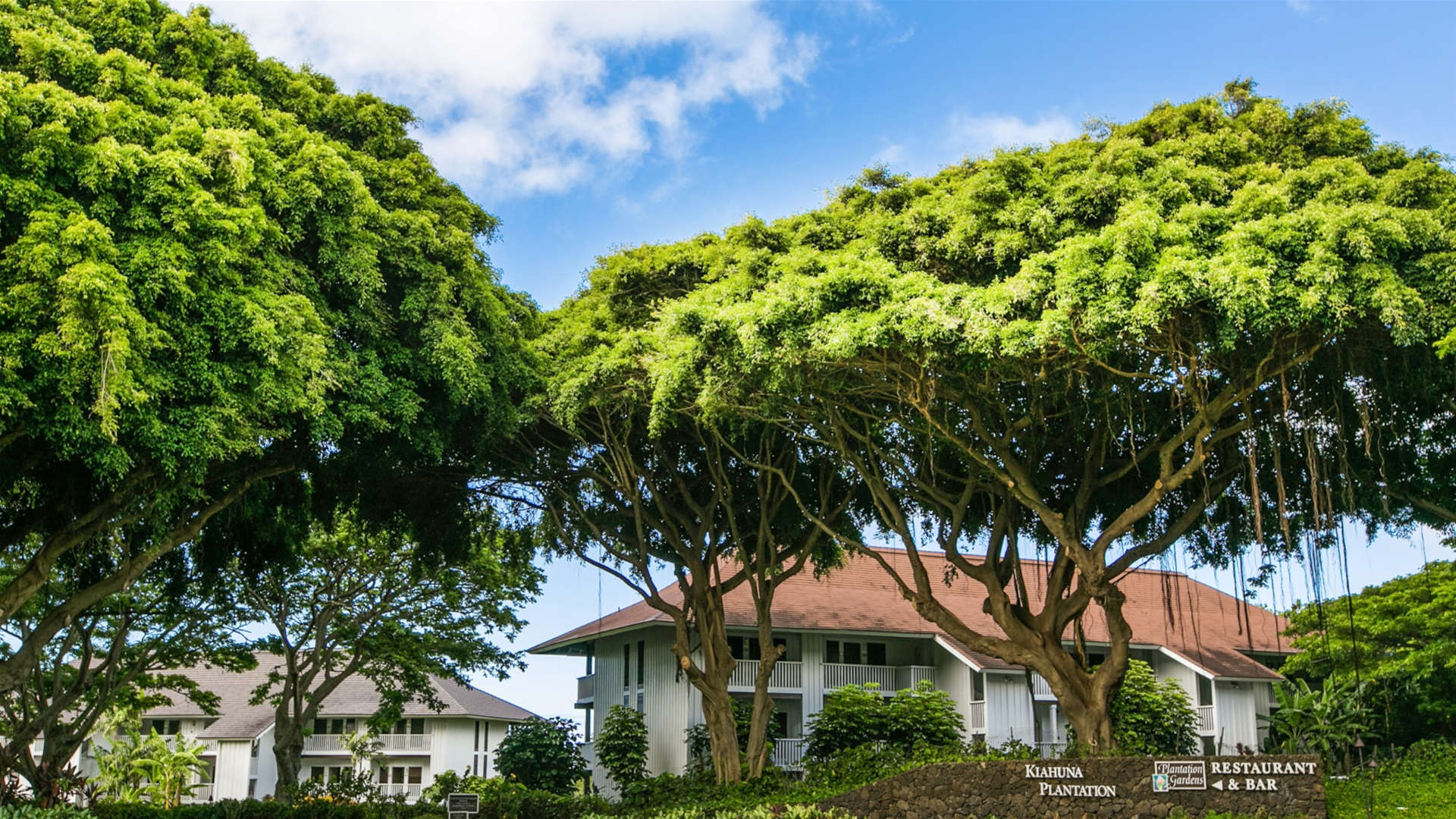
Trees of Kauai
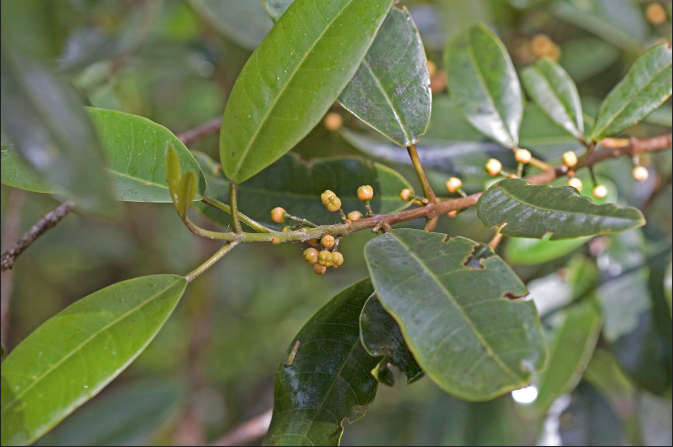
Mokihana Berry
The mokihana berry is the official island lei material of Kaua`i. The mokihana is a native citrus tree. The leathery anise-scented fruit must be strung within a few hours of picking. Hawaiian women and men both wear the strung berries as leis and the anise-scented twigs and berries were once a favorite perfume (placed between the folds of tapa cloths).
Mokihana belongs to the genus Pelea, derived from the Hawaiian goddess of the volcano, (Melicope Pele). Native to Kaua`i Island of Hawaii, the mokihana grows to a height of 6 to 25 feet in moist to wet forests at elevations from 1,200 to 4,000 feet.

Banyan Trees
Banyan trees are a common sight on Kauai, particularly in the Poipu area. These impressive trees can reach heights of up to 80 feet and have multiple trunks, making them an iconic symbol of the island. Banyan trees have an interesting history and are known for their immense size, shade, and beauty. They are also an important part of Hawaiian culture, having been planted by ancient Hawaiians to mark significant events.
The banyan tree is native to India but was brought to Hawaii in the 1800s and has since spread across the islands. It can be found in many places on Kauai, from residential yards to park areas. The most notable banyan trees can be found in the Poipu area, where two of the largest banyans on the island are located. The first is located at the Poipu Shopping Village and is thought to be over a century old. The second is found at the National Tropical Botanical Garden and is believed to be the largest banyan tree in the United States. Banyan trees are admired for their beauty and shade, making them a popular spot for picnics and photos. They are also known to live for hundreds of years, making them a symbol of life and resilience.
In Hawaiian culture, banyan trees are often planted to mark significant events such as weddings and births. Though banyan trees are a common sight on Kauai, they are not without their challenges. Many banyan trees have been cut down due to disease, pests, and overgrowth. In response, the state of Hawaii has implemented protections for banyan trees, making it illegal to cut them down without a permit.
In conclusion, banyan trees are a stunning and iconic symbol of Kauai and Poipu. They are admired for their beauty and shade and are an important part of Hawaiian culture. Despite their challenges, banyan trees are still thriving on Kauai, thanks to the state’s efforts to protect them.

Shower Trees
The shower trees on Ala Kinoiki Road were originally planted by King Kamehameha III in 1837. Volunteers have worked to plant more shower trees and maintain them for many years. The trees are colorful and bloom in late spring to early summer. The colorful blossoms carpet this by-pass road creating a beautiful sight. The history of shower trees on Kauai dates back to the 1800s when they were first introduced to the island. Today, these trees are a part of the landscape and help to bring beauty and vibrancy to the area. These trees are known for their vibrant colors, with the leaves ranging from deep green to bright yellow and orange. The shower trees usually flower in late spring, but can sometimes bloom as early as February. They are native to Hawaii and were originally used by ancient Hawaiians to create a rain-like effect. Today, these trees are a symbol of Hawaii`s natural beauty and are protected by state and federal laws.

Monkeypod Trees
Monkeypod trees were introduced to Hawaii in the 1850’s and can be found in the Poipu area of Kauai. These majestic trees can grow up to 80 feet tall and are known for their broad, canopy-like branches. The leaves of the monkeypod tree are long and oval-shaped, with a light-green color. The flowers of the tree are fragrant and white, blooming around the springtime. The fruit of the tree is an oval-shaped pod that can be green or brown. Monkeypod trees are a popular tree in the Islands and are often found in parks, resorts, and residential areas. They provide a great source of shade and beauty to their surroundings.
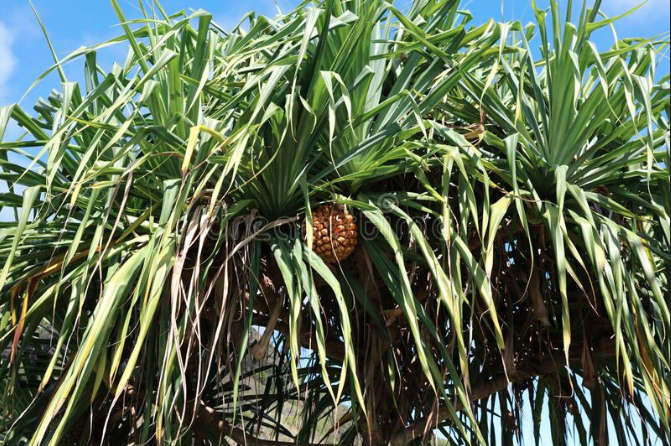
Hala Trees
The Hala Tree is a native species to Kauai. There are several varieties of Hala Trees found in Poipu, including the Hawaiian Hala, the Loulu Hala, and the Polynesian Hala. Each type of Hala has its own distinct characteristics, such as size, shape, and color. The Hawaiian Hala is the most common type and can be found in many gardens and landscapes throughout the area. The Loulu Hala is smaller and more delicate, while the Polynesian Hala is larger and more robust. All of these varieties of Hala Trees are highly valued for their beauty and are a common sight in Poipu.
Hala tree leaves are used for a variety of medicinal and spiritual purposes. People believe that the leaves can be used to help heal wounds and bruises and can be used to ward off negative energy. The fruit is mistaken for pineapple and it is not edible.
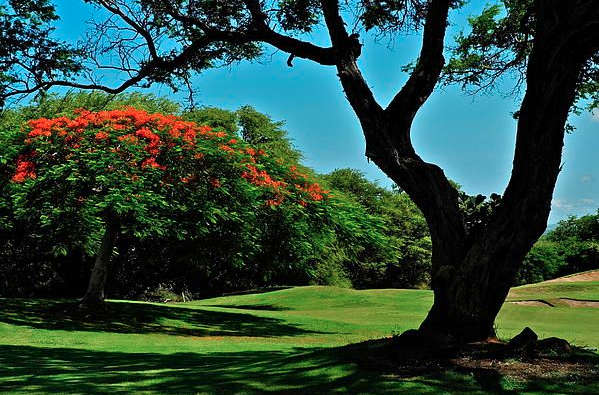
African Tulip Tree
The African Tulip Tree (Spathodea campanulata) is a tropical tree native to Africa but is also found on Kauai and in Poipu. It was first introduced to the Hawaiian Islands in the late 1800s and is now a common sight in many parts of the islands, including Kauai and Poipu. African Tulip Trees are known for their showy flowers, which range in color from yellow to pink and orange. They are also known for their fast growth rate and ability to adapt to various climates. These trees are typically found in parks, gardens, and other landscaped areas and provide a beautiful display of color and texture throughout the year. The African Tulip Tree is a popular tree among volunteers, who have planted many of them along Ala Kinoiki Road.
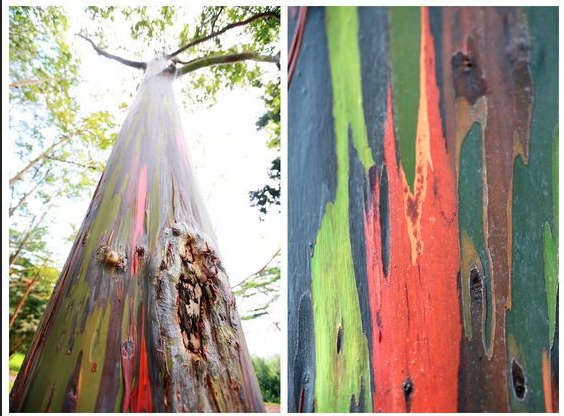
Rainbow Eucalyptus Trees
Rainbow Eucalyptus trees (Eucalyptus deglupta) are a unique and vibrant species of tree native to tropical regions throughout the world. The very first rainbow eucalyptus was introduced to the Hawaii from the Philippines as part of a reforestation movement in 1929.They are known for their colorful bark, which is made up of shades of red, orange, yellow, green, and purple. The trees can reach heights of up to 200 feet and can live for up to 300 years. They can be found in various parts of Kauai, including Koke`e State Park, Waimea Canyon, and Hanapepe Valley. The Rainbow Eucalyptus has a long history in Hawaii. It has been a part of the Hawaiian landscape since then. The trees are highly valued for their beauty and their ability to provide shade and shelter. They are also used in the production of Hawaiian Koa furniture, as well as for their medicinal properties.
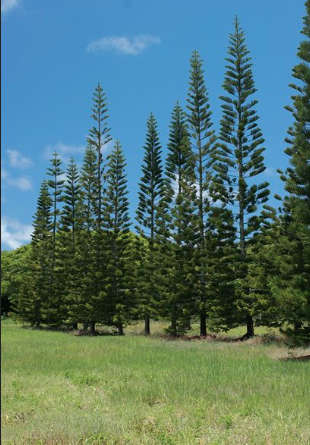
Cook Pine Tree
The Cook Pine Tree (Araucaria columnaris) is a species of an evergreen tree that were introduced to Kauai and has a long and important history in the Hawaiian Islands. The Cook Pine tree is easily recognizable by its tall, columnar shape and dark green needles. The tree is found in many parts of the island, especially along the beaches in Poipu and in the forests of Kokee State Park. Cook Pine trees are considered a symbol of Kauai and are often used to represent the island in artwork and photographs. The Cook Pine tree is also important culturally, as it is associated with the god Lono and was once used as a sign of royalty. Cook Pine trees are also renowned for their ability to survive harsh conditions and can often be found growing in difficult terrain, including in the volcanic regions of the island. These trees are often used as Christmas trees.

Albizia Tree
The Albizia tree (Albizia saman) is an invasive species to Kauai that is found on the island in various locations. It is most commonly found in the southern and western parts of the island, including Poipu and Koloa. Historically, the Albizia tree has been used for various purposes, such as medicine, fuel, and timber. It has been used for its medicinal properties to treat various ailments, such as fever, stomach ailments, and eye problems. In addition, the wood of the Albizia tree is highly valued for its strength and durability, making it an excellent choice for construction and fuel. Albizia are large trees and can grow up to 150 feet tall, they can grow up to 15 feet a year and their brittle limbs are prone to sudden branch drop and are dangerous in high winds. It produces large number of seeds/pods easily dispersed by the wind so it is very difficult to eradicate and control.
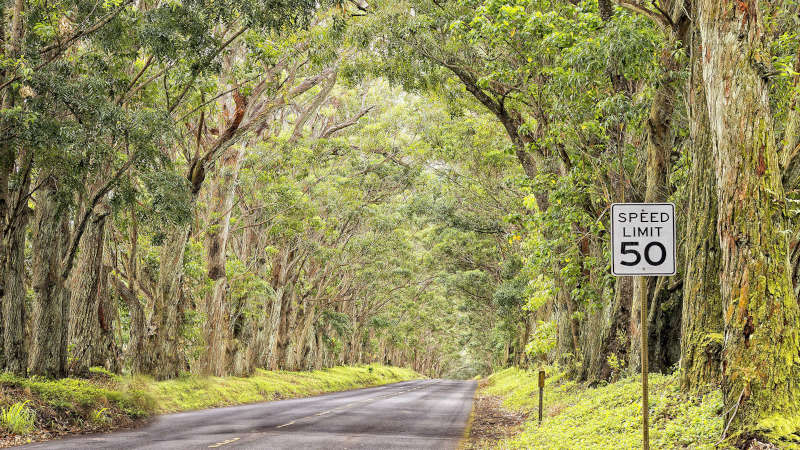
The Trees of the Tree Tunnel
The Tree Tunnel on Kauai is a picturesque drive lined with a variety of trees, including Eucalyptus robusta, Cook Pine, Jacaranda, African Tulip Tree, and Hala. The trees are all locally grown, and the tunnel is a popular tourist attraction. The Eucalyptus robusta, also known as the Flooded gum, is the most common tree in the tunnel and provides a unique experience with its thick canopy and fragrant aroma. Cook Pine trees, or Araucaria columnaris, have been a part of the island`s landscape for centuries, and are known for their tall, straight trunks and spreading crown. Jacaranda trees, or Jacaranda mimosifolia, are notable for their spectacular purple blossoms and can be seen along the roadside. African Tulip Trees, or Spathodea campanulata, are known for their bright orange flowers and are native to the island. Lastly, Hala trees, or Pandanus tectorius, are often found in the tunnel and are well known for their leaves, which are used to make traditional Hawaiian crafts.
The trees that make up the tunnel were planted in the late 1800s by local sugar plantation workers. The tunnel was originally a part of the Old Koloa Road, which connected Koloa to Lihue.

Ironwood Trees
Ironwood trees are a prominent feature on the island of Kauai, located in the Hawaiian archipelago. These trees, also known as Casuarina, are not native to the island but have become a part of the ecosystem over time. Ironwood trees are known for their conical shapes and needle-like leaves, which give them an unusual appearance compared to other trees on the island. Ironwood trees were introduced to Kauai in the early 1900s as part of a campaign to combat soil erosion. The trees were thought to be suitable for Kauai`s dry and sandy soil, and their extensive root systems were expected to stabilize the land.
One unique aspect of the ironwood tree is that they do not produce true cones like most evergreen trees. Instead, they produce drooping fruits that resemble pine cones. The fruits are small and contain seeds that can survive in harsh conditions. While the ironwood tree is often appreciated for its beauty and hardiness, it is also known for its potential negative impact on the environment. The tree has been known to crowd out native plants and create monocultures, which can have significant consequences for the local ecosystems. Invasive species like the ironwood tree have become a concern for conservationists trying to preserve native habitats and biodiversity.
Despite these concerns, ironwood trees remain a striking feature of the Kauai landscape. They can be found in many locations on the island, such as parks, golf courses, and even along the coastline. Their conical shapes and unique appearance make them interesting to look at, and they provide shade and respite from the sun in otherwise exposed areas. In conclusion, ironwood trees are a hardy and distinctive presence on Kauai, with a complex history and impact on the island`s ecosystem. Visitors to Kauai can appreciate their beauty while being mindful of the importance of preserving native habitats and biodiversity.

